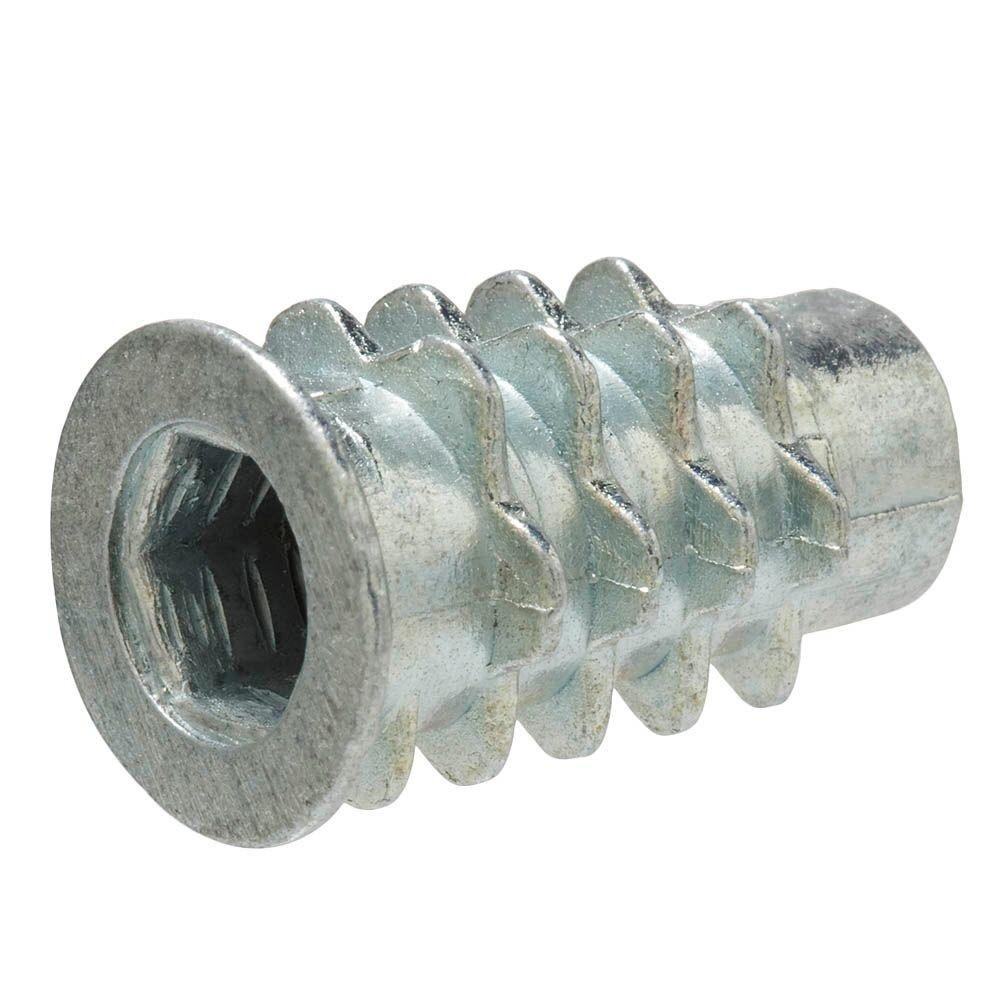Know Your Nuts: Nuts for Wood
In our next edition of Know Your Nuts, we’ll be looking at the two most common types of nuts for wood. These nuts are used in applications where a durable thread is needed but the substrate is too soft for repeated assembly and disassembly. A common commercial use for these products is in the ready-to-assemble furniture industry, where products are shipped flat and need to be assembled by the consumer.
Tee Nuts
Tee nuts feature a thin, long body with a T-shaped flange at one end. The flange, which has 3 or 4 prongs attached to it, digs into the substrate to be flush with the surface, leaving it completely flat. Tee nuts are often used to fasten particle board, composite materials or wood more securely.
Insert Nuts
Insert nuts, sometimes called hex drive inserts, create a threaded socket for a wooden substrate, functioning much like a wall anchor. After a hole is pre-drilled, insert nuts are put into the hole, either by screwing or hammering it in. No matter how the nut is inserted, the external, teeth-like protrusions bite into the wooden substrate, which prevents the nut both from turning and from pulling out.
If you have further questions about nuts or inserts for wooden assemblies, please don’t hesitate to contact us for more information.


